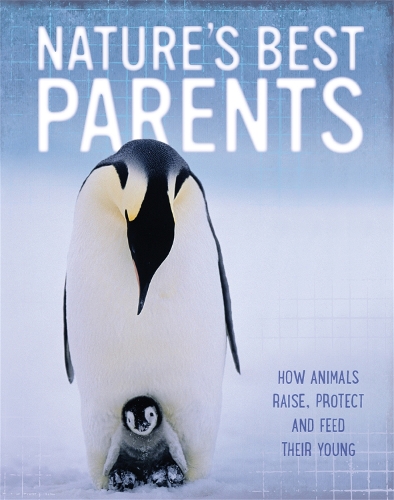
Nature's Best: Parents
(Hardback)
Available Formats
Paperback
Published: 8th January 2019
Hardback
Published: 27th August 2015
Hardback
Published: 24th September 2015
Paperback
Published: 8th November 2018
Publishing Details
Nature's Best: Parents
By (Author) Tom Jackson
Hachette Children's Group
Wayland
24th September 2015
United Kingdom
Classifications
Children
Non Fiction
591.563
Physical Properties
Hardback
32
Width 218mm, Height 271mm, Spine 9mm
348g
Description
Some animals have developed astonishing parenting techniques which ensure the survival of their species, even in the harshest of conditions. From emperor penguins, who share parenting duties and manage to raise their chicks in the coldest temperatures on Earth, to the giant anteater, who carries its tiny helpless baby on its back for months before it can fend for itself, the creatures featured in this book have developed ways of caring for their young that are both unique and out-of-this-world.
Find out more about these extraordinary behaviours and learn how evolution has shaped each animal's parenting strategy.Vivid, arresting photography paired with captivating animal encounters make this book a thrilling introduction to some of the basics of evolutionary theory.Author Bio
Tom Jackson has been a writer for 20 years. He has written more than 80 books and contributed to hundreds more. Tom gets to write about a wide range of subjects, everything from axolotls to zoroastrianism. However, his specialties are natural history, technology and all things scientific. Tom spends his days finding fun ways of communicating these kinds of facts, new and old, to all age groups and reading abilities.
Tom lives in Bristol, England, with his wife and three children. He studied zoology at Bristol University and has had spells working at the zoos in Jersey and Surrey. Tom has also worked as a conservationist, which saw him planting trees in Somerset, surveying Vietnamese jungle and rescuing wildlife from drought-ridden Zimbabwe. Writing jobs have also taken him to the Galapagos Islands, the Amazon rain forest, the coral reefs of Indonesia and the Sahara Desert. Nowadays, he can be found mainly in the attic.